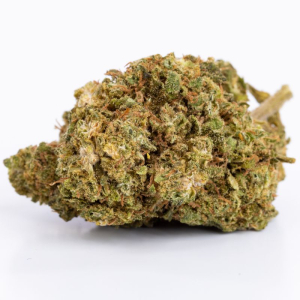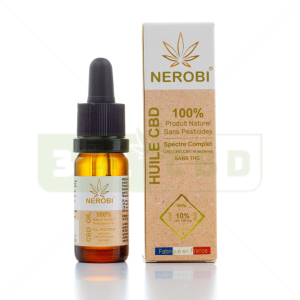Do you suffer from tendinitis? You are (very) far from being the only one…
In France, more than one in five visits to the physiotherapist (21%) is motivated by tendinopathy, far ahead of sprains (11%) and neck pain (10%). In the professional environment, approximately 30% of consultations involve tendinopathy, whether as the main pathology, adjacent pathology or aggravating factor.
In the United States, more than 70,000 employees are absent from the office each year due to moderate to severe tendonitis. This shows how common this painful tendon disease is!
To keep it harmless, we will have to treat it, and urgently. Indeed, tendinitis is one of the main causes of professional disability, to the extent that it tends to become chronic and worsen. Thus, up to 25% of tendinitis ends up hindering small daily actions over time, for example getting dressed or taking a shower.
As we will see, CBD is above all an auxiliary remedy which will allow you to limit pain and soothe inflammation in the meantime to see your doctor. But before we go any further… are you sure you really have tendonitis?
What is tendonitis, and how to recognize it?
Tendinitis is a bit like your tendons have decided to go on strike!
Think of your tendons as strong ropes that attach your muscles to your bones. They are involved in every movement you make, from blinking your eyes to bench pressing to the gym!
But sometimes your tendons get fed up. If you put too much stress on them, repeatedly or incorrectly, they will tend to become irritated or inflamed. And here is where tendinopathy comes in: it is a kind of protest of your tendons against abuse.
The signs of tendonitis are unmistakable. There are seven of them... you can't miss them:
-
Localized pain. This is the most telling indicator. The pain is often acute, and it is for this reason that CBD is recommended, as we will see later. It is located precisely on the tendon concerned, but it will quickly radiate towards neighboring areas. It usually intensifies when using the joint linked to the inflamed tendon;
-
Swelling. The area surrounding the tendon will swell, sometimes feeling warm to the touch;
-
Redness. The skin covering the tendon will be slightly reddish. This is a sign of underlying inflammation;
-
Sensitivity. The tendon becomes sensitive to touch. Even light direct pressure on the tendon or its insertion can cause pain or, paradoxically, relief;
-
Stiffness. You will also have a very unpleasant feeling of stiffness in the tendon area, particularly noticeable in the morning or after a period of inactivity;
-
Crackling sounds. In some cases, you will notice crackling sounds when you move the affected joint. It is the friction of the inflamed tendon that produces it... and it is particularly unpleasant. Please note: this is not a sign of seriousness, don't worry too much;
-
Decreased range of motion. Depending on the affected tendon, you will have difficulty moving the affected joint in the usual range.
Tendinitis: CBD ticks all the boxes for relief!
Muscle and joint pain are among the main applications of cannabidiol (CBD). It is even the third most cited motivation by consumers who consume non-psychotropic cannabinoids according to an American study:
-
Relieve stress and anxiety (49%);
-
Improve the quality of sleep and fight against insomnia (42%);
-
Relieve joint pain and arthritis (27%) ;
-
Fight against depression and mood disorders (26%);
-
Relieve migraines and headaches (21%).
If the interest of CBD for neurodegenerative pathologies is still being studied, its positive impact on diseases and inflammatory disorders is no longer in doubt, and tendonitis is obviously one of them.
To relieve you, CBD and other non-psychotropic cannabinoids from the hemp plant will mobilize several virtues.

CBD against tendonitis: analgesic properties
CBD will first mobilize its analgesic properties to reduce the acute pain of tendinitis. The latter can be very intense if the affected tendon is located at the level of the Achilles tendon, the rotator cuff (shoulder), the wrist (on the side, near the base of the thumb) or even inside the knee, where the three tendons of the muscle attach to the lower part of the thigh.
How does CBD work on tendonitis pain? By acting on the “CB 1” and “CB 2” receptors of your endocannabinoid system, CBD will modulate pain signals as they are perceived in the brain. Its action on glutamate and serotonin also helps reduce the sensation of pain to provide relief fairly quickly (if you consume CBD sublingually).
CBD against tendinitis: the anti-inflammatory effect
Tendinitis is an inflammatory pathology (of the tendon). And CBD is an excellent anti-inflammatory!
First, CBD will act indirectly on the “CB 2” receptors of your endocannabinoid system, at the level of immune cells. Objective: modulate the inflammatory response and reduce inflammation around the affected tendon. Reduced inflammation = reduced pain + a cellular microenvironment more conducive to tendon healing.
CBD against tendinitis: the effect on edema
CBD will finally help deflate the edema to provide even more relief and reduce pressure on the tendon and surrounding areas. Here's how:
-
CBD will reduce the release of pro-inflammatory cytokines to reduce inflammation and swelling around the tendons;
-
CBD inhibits the activity of the COX-2 enzyme which plays a role in the production of prostaglandins involved in inflammation and swelling;
-
CBD will also limit the infiltration of immune cells into the inflamed tissue;
-
By reducing inflammation, CBD helps improve blood circulation in affected areas and thus accelerate the resorption of edema;
-
CBD has antioxidant properties. It will therefore reduce cellular and tissue damage associated with inflammation and promote the resorption of edema.
How to use CBD to calm tendonitis?
For very painful tendinitis, we will seek rapid relief. This is why we will recommend CBD products that can be consumed sublingually or by vaporization, starting with CBD oils and tinctures.
Use a pipette to apply a few drops of liquid under the tongue. Keep the CBD oil or tincture under your tongue for 60 seconds before swallowing the remainder. Absorption is almost immediate via sublingual membranes. CBD and other cannabinoids will quickly enter the bloodstream and begin to take effect within minutes. The frequency can vary from two to four times a day.
Inhaling dried CBD flowers via a suitable vaporizer will also give you rapid relief. Do not exceed a temperature of 220° C to avoid combustion, which is very bad for your health.
You can also opt for CBD capsules, which allow a more precise dose but whose effect will be delayed over time (more than two hours) due to digestion.
You can finally complete this natural treatment of tendonitis with CBD creams or lotions to apply directly to the affected area. Gently massage the skin to promote absorption. Topical application will allow you to locally reduce inflammation and reduce adjacent muscle or joint stiffness. We recommend application two to three times a day.
CBD and tendinitis: a trip to the doctor is necessary
CBD will certainly help you relieve the pain and inflammation of tendonitis thanks to its anti-inflammatory, analgesic and antioxidant properties.
On the other hand, for a complete and personalized treatment, you will have to go to the doctor (a general practitioner or, better, a specialist in sports medicine), especially if the tendinitis is recurrent .















